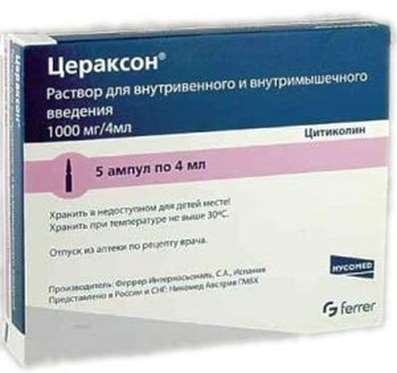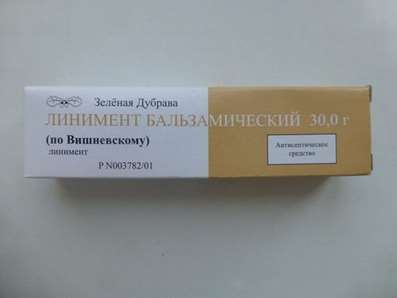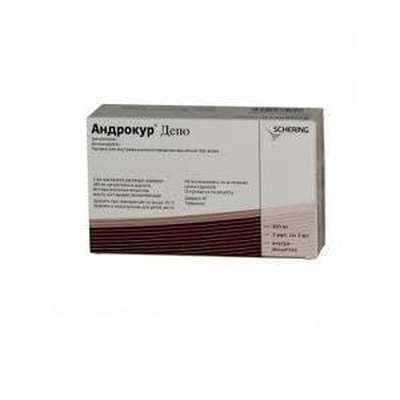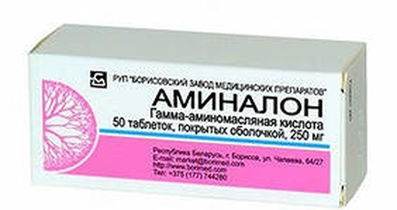Instruction for use: Prourokinase
I want this, give me price
Trade name of the drug – Gemase, Prourokinase recombinant, Purolase
The Latin name of the substance Prourokinase
Prourokinase (genus.)
Pharmacological group:
Fibrinolytics
The nosological classification (ICD-10)
H21.0 Hyphema: Traumatic Hyphema
H31.9 Vascular system diseases, unspecified: Angiospasm of the choroid; Angiospastic changes in the choroid; Atherosclerotic changes in the retina and choroid; Diseases of the choroid; Change in the mesh and choroid of the eye; Circulatory disturbances in the choroid of the eye; Disturbances of blood supply to the choroid; Vascular changes in the choroid of the eye; Thrombosis of the arteries of the choroid
H34.8 Other retinal vascular occlusions: Atherosclerotic changes in retina and choroid; Venous pathology of the retina; Retinal vein thrombosis; Disturbance of blood circulation of eyes; Angiospastic retinitis; Disturbance of blood circulation of the eye; Violation of intraocular blood circulation
H34.9 Retinal vascular occlusion, unspecified
H35.6 Retinal hemorrhage: Hemorrhagic retinopathy; Hemorrhage in the retina; Hemorrhage in the retina of the eye; Repeated haemorrhage in the retina; Rota company; Hemorrhages in the eye; Hemorrhages in the retina at altitudes
H35.8 Other specified retinal disorders: cystoid macular edema; Degenerative retinal changes; Senile degeneration of the eye retina; Senile degeneration of the retina
H40.9 Glaucoma, unspecified: Acute glaucoma; Acute attack of glaucoma; Afakia with glaucoma
H44.8 Other eye diseases: Hemophthalmos; Spikes of the eye
H57.8 Other unspecified diseases of eye and adnexa: Intraocular hemorrhage; Inflammation of the eye; Secondary hyperemia of the eye; Burning sensation in the eyes; Protection of the anterior surface of the eye; Itching in the eyes; Xerosis; Sensation of itching and burning eyes; Dry eye syndrome; Dry eyes; Xerophthalmia
H59.9 Lesion of eye and adnexa after medical procedures, unspecified: Condition after thermal conjunctival burns; Condition after thermal burns of the cornea; Condition after surgical burns of conjunctiva; Condition after surgical burns of the cornea
I21.9 Acute myocardial infarction, unspecified: Changes in left ventricle with myocardial infarction; Changes in the left atrium with myocardial infarction; Myocardial infarction; Myocardial infarction without Q wave; Myocardial infarction without signs of chronic heart failure; Myocardial infarction with unstable angina; Pirouette tachycardia with myocardial infarction
Pharmacology
Mode action - Fibrinolytic.
Pharmacodynamics
Recombinant fibrin-specific activator of urokinase-type plasminogen. It is a recombinant prourokinase and catalyzes the transformation of plasminogen into plasmin, which is capable of lysing fibrin clots (thrombi). The specificity of the action of recombinant prourokinase is based on the fact that it predominantly activates the fibrin-bound plasminogen having a different conformation than plasminogen circulating in the bloodstream and in the region of the fibrin clot is insensitive to specific inhibitors present in the blood plasma. The single-chain recombinant prourokinase molecule under the action of plasmin is converted into a double-stranded urokinase molecule, which unlike the single-stranded prourokinase form is significantly more active in relation to fibrin-associated plasminogen. A chain reaction of the interaction of recombinant prourokinase with fibrin-linked plasminogen arises, as a result of which the fibrin clot breaks down.
Pharmacokinetics
Data on the pharmacokinetics of prourokinase in systemic application are absent.
With local periocular administration of Cmax in the tissues of the eye is achieved by 1-2 hours, then the concentration gradually decreases, after 12-24 hours prourokinase is detected in trace amounts. With intraocular guidance, Cmax is determined in intraocular structures. T1 / 2 is 4-6 hours. Since the dose for topical application is small (up to 5000 ME), there is no concentration in the blood, significant for systemic action.
Application of the substance Prourokinase
Acute myocardial infarction in the first 6 hours after the development of the disease (as a thrombolytic agent).
In ophthalmology:
- hyphema, hemophthalmus;
- preretinal, subretinal and intra-retinal hemorrhage;
- fibrinoid syndrome of various genesis;
- occlusion of the central artery of the retina and its branches;
- thrombosis of the central vein of the retina and its branches;
- prevention of adhesions in the postoperative period for antiglaucomatous operations.
Contraindications
hypersensitivity; Condition with a high risk of bleeding, incl. Blood diseases (hemorrhagic diathesis - for example, hemophilia, thrombocytopenia); Extensive surgery or extensive trauma up to 4 weeks; Resuscitation measures that required intensive indirect heart massage, including cardiopulmonary resuscitation for more than 10 minutes; Cardiogenic shock (class IV according to Kiplip); Liver disease with severe hemostasis; Puncture of uncompressed vessels (v. Subclavia); Diabetic hemorrhagic retinopathy; Previous hemorrhagic stroke; SAD> 180 mm Hg Or DAD> 110 mmHg, refractory to treatment; Arterial hypertension with dAD> 105 mmHg; Hypertensive crisis (due to the possible development of recurrence of intraocular hemorrhage); Suspicion of aortic dissection; Septic (bacterial) endocarditis; Gastrointestinal bleeding; Active form of tuberculosis; Proliferative diabetic retinopathy with gliosis of III-IV degree; Chronic renal failure (serum creatinine level> 0.02 g / l, urea> 0.5 g / l); Severe hepatocellular insufficiency (blood albumin <3 g%); pregnancy; lactation; Age under 18 years (effectiveness and safety not studied)
Application of pregnancy and breastfeeding
Contraindicated.
Side effects of the substance Prourokinase
Bleeding of varying severity. With the development of local bleeding (for example, from the places of punctures, gums, etc.), which are the most frequent side effect, as a rule, no additional interventions are required. With the development of serious complications - internal bleeding (a decrease in Hb level of more than 3 g / dl) - immediate discontinuation of administration and, if necessary, blood transfusion is required. If you suspect a development of hemorrhagic stroke, urgent consultation of a neurologist and conducting an appropriate examination (eg CT) and treatment is needed.
Effective coronary thrombolysis can be accompanied by the onset of reperfusion arrhythmia, which may require the use of conventional antiarrhythmic therapy.
The introduction of therapeutic doses, as a rule, does not lead to a decrease in blood pressure.
Allergic reactions during systemic administration are usually not observed or expressed very poorly. With the development of allergic reactions, conventional antiallergic therapy is used. Anaphylactic reactions (ie caused by IgE) were not observed even after repeated administration.
With ophthalmic use, allergic reactions can be noted, which are manifested in edema and hyperemia of the skin of the face on the side of administration, phenomena of allergic tenonitis (chemosis, conjunctival hyperemia, decreased mobility of the eyeball).
Interaction
The risk of bleeding may increase with simultaneous use of antiplatelet agents, indirect anticoagulants, overdose of heparin (> 4000 ED) and other drugs acting on the blood coagulation system.
Co-local application with proteolytic drugs has shown that combining prourokinase with collagenin injections is inexpedient. The combination of prourokinase with other thrombolytics should be used with caution. Possible combined use of prourokinase and emoxipin, as well as dexamethasone.
Overdose
Symptoms: hemorrhagic complications.
Treatment: small bleedings can be stopped without discontinuing systemic administration by temporarily stopping heparin infusion with additional control of activated partial thromboplastin time. In the event of life-threatening bleeding, the administration should be stopped and freshly frozen plasma or whole blood should be prescribed. If necessary, to neutralize the effect, it is possible to administer an antifibrinolytic agent, for example, aminocaproic or tranexamic acid.
With local administration at doses of 5000 IU, there is no risk of systemic bleeding.
Symptoms: in case of overdose, when using recommended doses (up to 5000 ME once) is unlikely, a recurrence of intraocular hemorrhage is possible. With a single administration in a dose exceeding 5000 IU, the risk of allergic reactions increases (see "Side effects").
Treatment: with overdose and surgical interventions against the backdrop of prourokinase treatment to reduce the risk of hemorrhage, the use of etamzilate in a dose of 250-500 mg is recommended.
Routes of administration
IV, Periocularly, intraocularly.
Precautions for the substance Prourokinase
Treatment of myocardial infarction should be carried out by qualified specialists in accordance with the standards of medical care for patients with acute myocardial infarction with mandatory use of anticoagulant and antiplatelet therapy.
The introduction of prourokinase, as well as other thrombolytic agents, is recommended to be carried out in conditions when standard resuscitation equipment and appropriate drugs are available. The most common complication associated with the use of prourokinase is bleeding. Simultaneous use of unfractionated heparin or low-molecular heparin and double antiplatelet therapy (250 mg of acetylsalicylic acid + 300 mg of clopidogrel) increases the likelihood of bleeding. Therefore, thrombolytic treatment requires careful monitoring of the zones of possible bleeding, including places of catheter insertion, arterial and venous punctures, incisions and injections. The use of rigid catheters, intravenous injections and punctures of uncompressed vessels should be avoided.
Additional recommendations on the use of anticoagulant and antiplatelet therapy to increase the effectiveness of prourokinase therapy
It is recommended simultaneous use of acetylsalicylic acid, clopidogrel and heparin, which should be administered immediately after the diagnosis of acute myocardial infarction. The recommended initial dose of acetylsalicylic acid is 160-250 mg. In this case, for the rapid onset of the action of prourokinase, it is necessary to use acetylsalicylic acid without an enteric-soluble shell orally. The first dose must be chewed and wait until it is absorbed from the oral cavity. In the following, it is recommended to take acetylsalicylic acid in a dose of 75-100 mg / day indefinitely after the infarction.
Clopidogrel is used in a loading dose of 300 mg, with a transition to a maintenance dose of 75 mg / day for the first 12 months after a previous myocardial infarction. The dose of heparin is calculated depending on the body weight. The administration of heparin is recommended starting with an IV bolus at a rate of 60 U / kg, but not more than 4000 units, followed by infusion of heparin for 24-48 hours at a rate of 1000 U / h under the control of activated partial thromboplastin time every 3 hours before the increase It is 2-2.5 times higher than the original value.
Influence on the ability to drive vehicles and work with machinery. The ability of prourokinase to influence the reaction rate when driving or working with machinery is not noted. However, depending on the individual reaction of the patient during the course of treatment, care should be taken when driving the car and working with the mechanisms.

 Cart
Cart





